
Managing compensation effectively is necessary for attracting and retaining top talent. PayScale has long been a go-to solution for compensation management, offering salary data, benchmarking tools, and compensation analytics.
However, with the evolving needs of businesses in 2025, more companies are exploring alternatives to PayScale. Organizations are seeking solutions that provide enhanced features, better pricing models, or specific functionalities that align with their goals.
This blog will explore some of the top PayScale alternatives and competitors in 2025. We will look at platforms that offer solid compensation management solutions and cater to diverse business needs.
Whether you are looking for a more cost-effective option, additional customization features, or better data accuracy, the alternatives we will discuss offer valuable solutions to optimize your compensation strategy.
As businesses increasingly prioritize data-driven, equitable compensation strategies, many are exploring alternatives to PayScale to meet their evolving needs. These alternatives offer a range of features that can better align with specific organizational goals.
The list includes platforms that can improve pay equity, integrate with HRIS systems, and stay competitive in a fast-changing market.
In this section, we will examine some of the top PayScale competitors for 2025. We will look at each platform’s unique capabilities and how they can enhance your compensation management processes.
The following platforms offer useful features designed to meet the evolving needs of modern organizations.
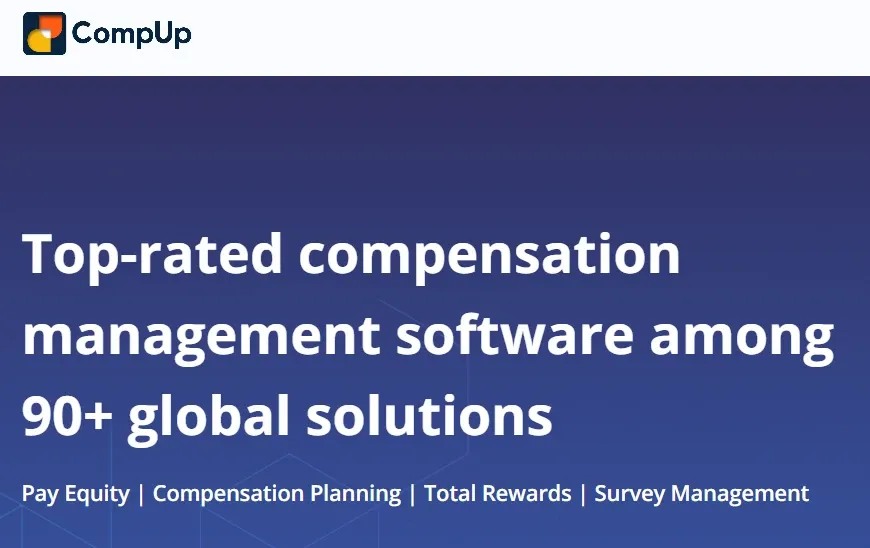
CompUp is a comprehensive compensation management platform offering real-time market data, advanced pay equity analytics, and seamless integration with HR systems. It helps organizations maintain competitive pay structures while ensuring transparency and equity, especially for diversity and inclusion goals.
Key Features:
Pros: Data-driven insights, supports pay equity analysis, seamless integration, customizable reports, promote transparency and fairness, enhances compensation planning.
Cons: Higher price point for small businesses, learning curve for new users, limited to HR and compensation data.
CompUp offers advanced real-time data and pay equity tools, making it ideal for organizations seeking to optimize compensation strategies while promoting transparency and fairness in pay practices.
Suggested Read: Steps to Crafting Total Rewards Statements: Template & Best Practices
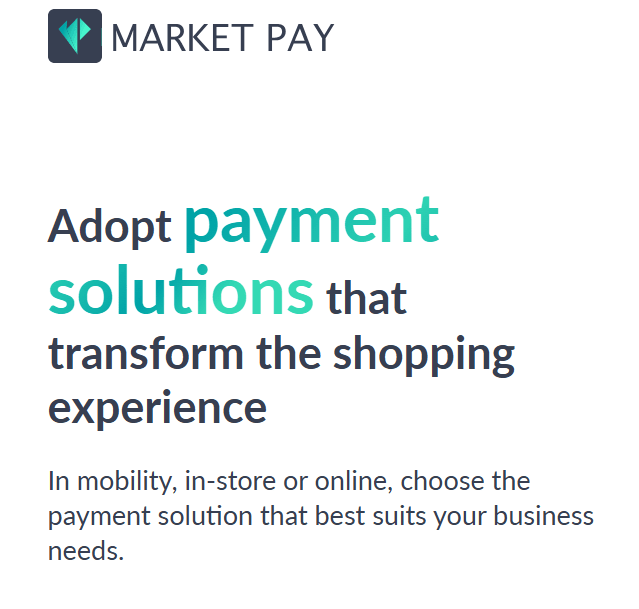
MarketPay is designed for detailed compensation surveys, benchmarking, and analytics. It provides industry-specific compensation data, enabling organizations to build competitive pay structures and perform accurate pay equity analysis.
Key Features:
Pros: In-depth industry-specific data, customizable reports, easy integration with other systems, and highly accurate pay equity analysis.
Cons: Can be complex to set up initially, subscription cost may be high for smaller businesses, limited usability for non-compensation roles.
MarketPay is perfect for organizations looking to leverage detailed, industry-specific compensation data to ensure competitive and equitable pay practices across multiple departments.
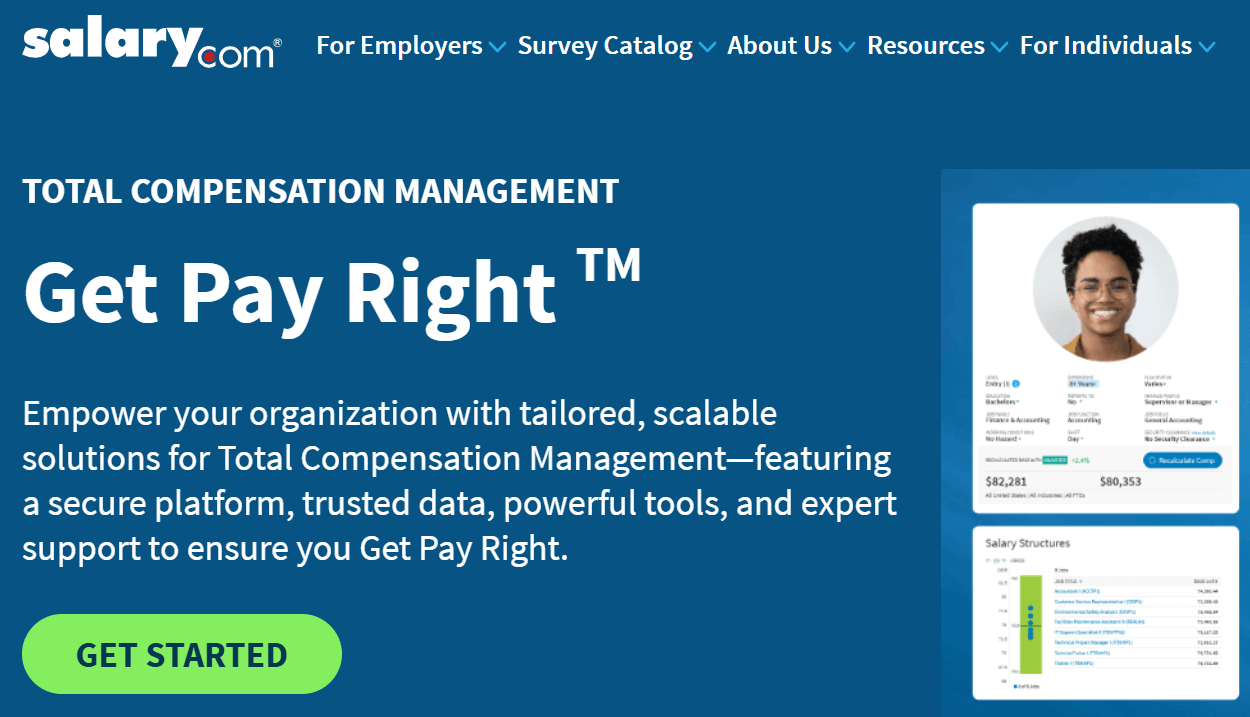
Salary.com offers robust compensation management tools, including salary data, market insights, and compensation surveys. Its platform focuses on salary benchmarking, making it a solid choice for companies needing flexible and transparent pay management.
Key Features:
Pros: Extensive salary data, flexible compensation planning, integration with existing HR systems, user-friendly interface, comprehensive market insights.
Cons: Limited advanced analytics, pricing may be high for smaller businesses, and fewer features for global market benchmarking.
Salary.com provides comprehensive compensation data and customizable planning tools, making it a reliable option for organizations seeking flexibility in managing competitive pay structures.
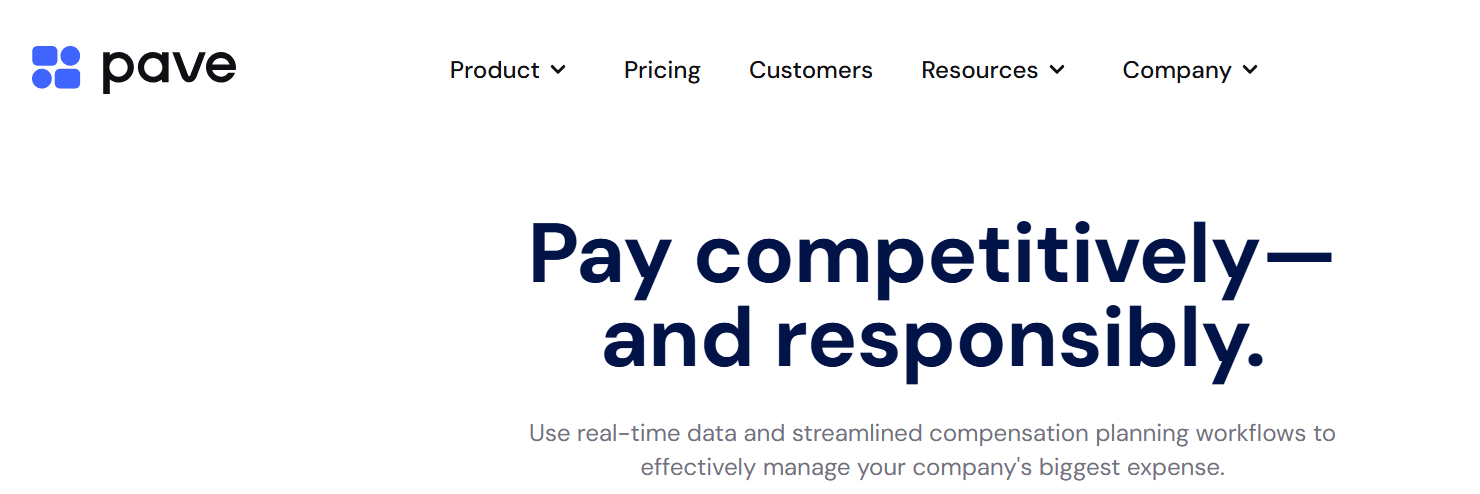
Pave is a compensation management platform designed to streamline salary benchmarking and pay equity analysis. It provides real-time market data and empowers HR teams with tools to create equitable and competitive compensation strategies. Pave is particularly useful for fast-growing companies looking to scale compensation plans.
Key Features:
Pros: Easy-to-use interface, real-time market insights, comprehensive pay equity analysis, flexible compensation planning, and integration with existing systems.
Cons: Limited global compensation data, pricing can be a concern for smaller companies, and fewer advanced features for large enterprises.
Pave is ideal for fast-growing organizations that need real-time data and tools to streamline compensation planning and ensure pay equity, all while scaling their operations.
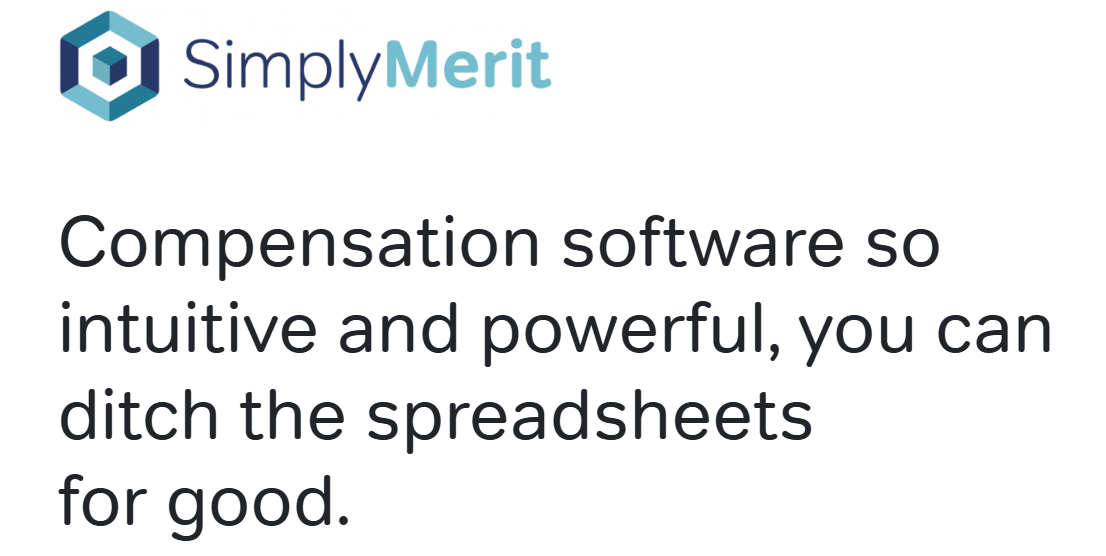
SimplyMerit offers a cloud-based compensation management solution designed to simplify salary benchmarking, merit increases, and pay equity analysis. It provides HR teams with easy-to-use tools for managing compensation adjustments and aligning pay structures with organizational goals.
Key Features:
Pros: User-friendly interface, strong pay equity and merit increase management, easy integration with other HR tools, and cost-effectiveness for mid-market organizations.
Cons: Limited customization options, fewer advanced reporting tools, not as suitable for large enterprises with complex compensation needs.
SimplyMerit is a great option for mid-market organizations looking for an intuitive, cost-effective platform to manage merit-based pay adjustments, compensation planning, and pay equity analysis.
While PayScale offers a comprehensive solution for compensation management, it's important to explore other options. Understanding the potential benefits and limitations of PayScale helps organizations determine if alternatives better align with their unique needs and goals.
Suggested Read: Defining Your Employee Compensation Philosophy: Examples and Framework
PayScale has established itself as a reliable tool for compensation management. However, there are several reasons why businesses may look for alternatives. Depending on an organization’s unique needs, goals, and budget, PayScale may not always be the best fit.
Here are a few key reasons why companies may seek other solutions:
These points highlight the potential advantages of exploring other compensation management tools that better meet your company’s needs. The next section will guide you through the essential features to evaluate to ensure that you select the best solution for your organization’s compensation needs.
Suggested Read: Modern Compensation Strategy and Best Practices
When evaluating PayScale alternatives, it’s important to focus on specific features that align with your organization’s compensation management goals. Choosing the right PayScale alternative requires careful consideration of these key features.
By focusing on data accuracy, customization, pay equity tools, integration, and user experience, your organization can find a compensation management solution that meets its unique needs.
Here are some of the most important aspects to consider to ensure you choose the right platform for your business:
Make sure to evaluate each platform based on your company size, industry, and specific compensation goals to ensure long-term success. In the next section, we will discuss the factors that should influence your decision when selecting the right compensation management tool.
Suggested Read: 5 Key Compensation and Benefits Trends for 2025
CompUp stands out as a comprehensive solution that not only offers real-time market data and advanced pay equity analytics but also seamlessly integrates with existing HR systems. The platform offers customizable pay bands, compensation forecasting, and a strong focus on diversity and inclusion.
CompUp also empowers organizations to build transparent, equitable, and competitive pay structures. It’s the ideal platform for businesses looking to optimize their compensation strategies while ensuring fairness and aligning with long-term organizational growth.
In 2025, businesses are seeking more than just a tool to manage compensation. They need a solution that provides real-time data, supports diversity and inclusion, and integrates seamlessly with existing HR systems.
PayScale alternatives like CompUp offer comprehensive features. This includes pay equity analysis, competitive salary benchmarking, and compensation planning, enabling organizations to create fair, transparent, and competitive pay structures.
Looking for a comprehensive compensation management solution? CompUp offers customizable pay bands, advanced pay equity tools, and easy integration with your existing systems. Schedule your free demo today.
How do PayScale alternatives compare in terms of pricing?
Pricing for PayScale alternatives varies based on features, business size, and subscription models. Some platforms offer more flexible pricing structures, such as pay-per-user models or tiered pricing, which can be more cost-effective for small to medium-sized businesses.
Are PayScale alternatives suitable for small businesses?
Yes, many PayScale alternatives, such as CompUp and SimplyMerit, offer pricing and features that cater to small businesses, with flexible options and more streamlined tools for managing compensation without the complexity of larger enterprise solutions.
Can PayScale alternatives support global compensation management?
Some PayScale alternatives, like MarketPay and Salary.com, offer global compensation data and benchmarking, making them suitable for multinational companies. However, platforms like Pave and SimplyMerit may focus more on regional or industry-specific compensation trends.
How do PayScale alternatives help with pay equity analysis?
Many alternatives, such as CompUp and Salary.com, provide built-in pay equity analysis tools. These tools allow HR teams to assess and address compensation disparities across gender, race, and other demographics, helping organizations ensure fair pay practices.
Can PayScale alternatives integrate with my existing HR software?
Yes, most PayScale alternatives, including CompUp, Simply Merit, and Pave, offer seamless integration with HRIS, payroll systems, and performance management tools. They offer smooth data flow across all HR functions.
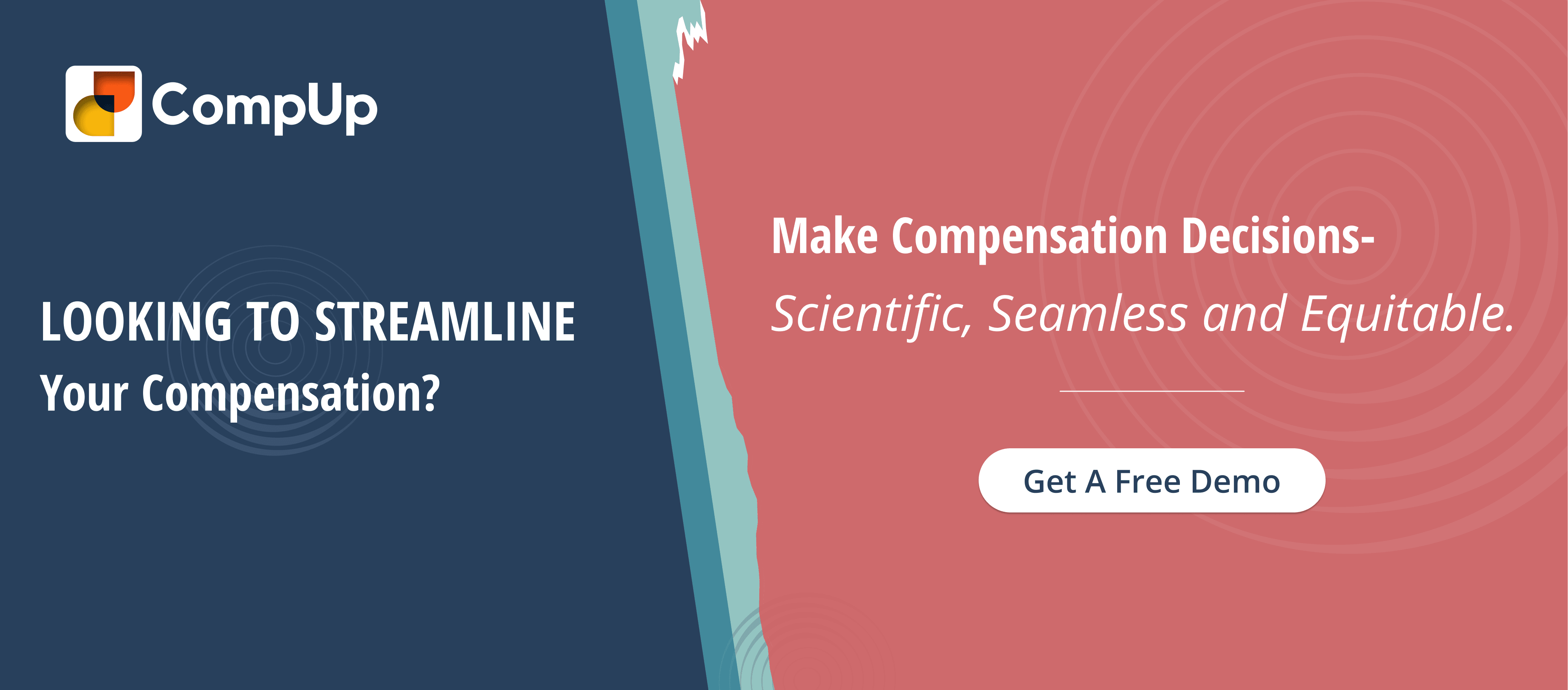
Co-founder & CEO, CompUp
Anurag Dixit, founder of CompUp, is a seasoned expert in all things compensation and total rewards. With a deep understanding of the current compensation trends, his vision is to help companies create fair, transparent, and effective compensation strategies.
Revolutionizing Pay Strategies: Don't Miss Our Latest Blogs on Compensation Benchmarking